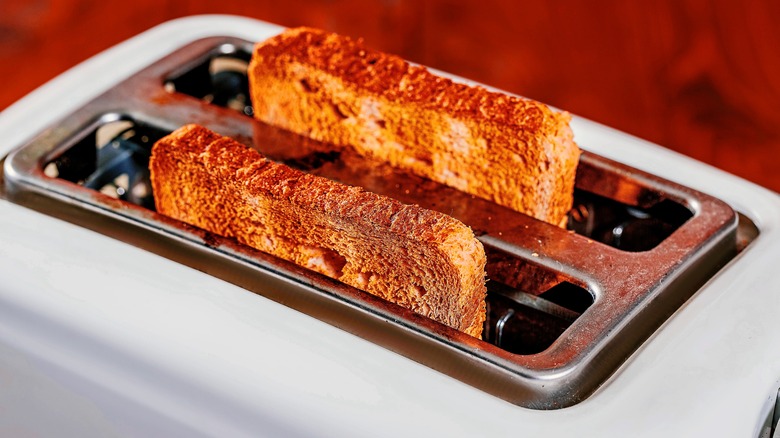What Do The Numbers On A Toaster Mean?
There's a lot of gambling going on in your average kitchen. Do you dare to use that sour cream that's a day or two past its "sell by" date? Is that clumped-up sugar in the regularly neglected canister on the kitchen counter OK for making cookies? And when exactly did you buy that nutmeg you're sprinkling into the eggnog? These are all vexing questions, for sure. But for an almost daily kitchen gamble, nothing beats spinning the dial on your toaster, settling on a number in search of that just-right level of warmth, crunch, and caramelization for your morning avocado toast.
In the domestic equivalent of waiting for a Las Vegas roulette wheel to click-click-click to a stop, setting your toaster dial and waiting for your creation to pop out can be a nerve-wracking ordeal: Will you wind up with deeply charred toast, stifling your avocado inventiveness? Will the jelly filling of your breakfast pastries achieve the perfect comforting warmth or retain a congealed chill?
How, indeed, can you know what you'll wind up with when you set the toaster dial? As with most things, knowledge is power, and learning even a little bit about exactly what the numbers on your toaster mean might make your next try at kitchen counter roulette a bit more of a sure thing.
It's not a clock, it's a capacitor
For the casual cook, the numbers on the toaster dial might understandably appear to be a countdown clock. Set the dial at 6, say, and six minutes later, up pops your perfect toast. Though some toasters do use a timer, it's far more likely that the dial on your appliance controls some electrical thingamajigs — a variable resistor, a capacitor, and an electromagnet. Together, they do comprise a timer, but not in the traditional sense.
Put simply, a variable resistor varies the amount of current flowing through a circuit, a capacitor stores an electrical charge, and an electromagnet is a piece of metal that takes on magnetic properties when electrified. Here's how they function together in making toast, as explained in additional detail by HowStuffWorks:
When you press the toaster handle down, you complete a circuit that sends power to the nichrome wire, or the orangey-glowing lines inside your toaster. That circuit, which includes the resistor and capacitor, powers the electromagnet that holds your bread in place and charges the capacitor. When the capacitor reaches a certain voltage, it cuts power to the electromagnet, and your bread pops up.
So, when you twist the toaster dial, you're setting the capacitor's resistance, dictating how long the toast is locked into the toaster. The higher the number, the more toasting time. While using your toaster will always be a bit of a gamble, you'll likely do it so many times that the perfect settings will become a part of family lore. Otherwise, like at a Las Vegas roulette wheel, you spin the dial and take your chances.

